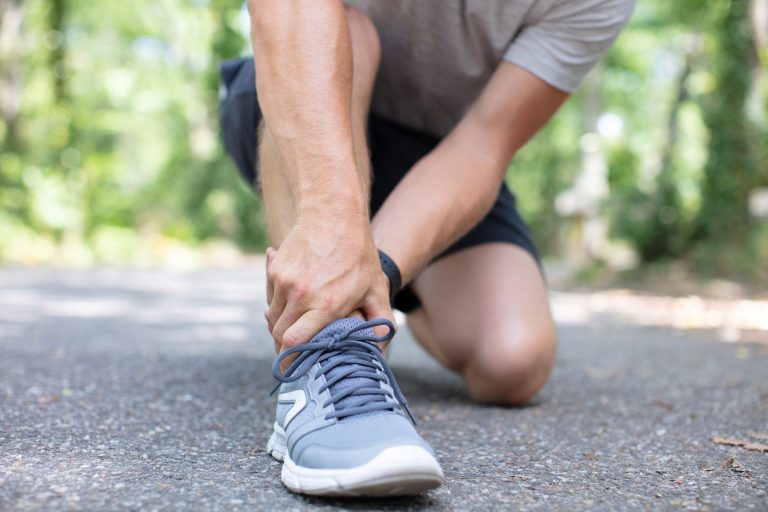Do you suffer from Achilles Tendinopathy?
February 10th, 2020
Could your heel pain be due to a biomechanical problem? Some foot or ankle pathologies can be caused by abnormal biomechanics, i.e. a dysfunction in the movements of the musculoskeletal system (ligaments, joints, muscles, tendons). The ligaments of the foot are very solicited and are therefore more at risk of stretching during movement.
Achilles Tendinopathy
Achilles tendinopathy includes all pathologies related to the Achilles tendon, the most common being Achilles tendinitis. This is an inflammation of the Achilles tendon, which is the structure that connects the calf to the heel bone. This irritation can cause pain or, in some cases, swelling of the tendon behind the ankle. This type of injury can occur as a result of direct trauma, but in the vast majority of cases, it is related to overuse of this portion of the lower limb, either at its enthesis, insertion at the heel or in the middle portion of the tendon. The characteristic pain of Achilles tendonitis is usually located precisely on the Achilles tendon.
It should be noted that heel pain can have a multitude of possible causes such as plantar fasciitis, commonly known as canker sores, bursitis, neuritis or even an arterial blockage.
It is therefore important to consult a health professional to make the right diagnosis. Identifying the problem is the basis of a good treatment plan.
The causes
There are many factors that can lead to Achilles tendonitis. By analyzing the history of the disease, it is not uncommon to be able to establish a change in habits that preceded the onset of pain. This may be an increase in walking distance or a drastic increase in the volume of sports activities, especially those involving impacts such as running or jumping. It is also important to pay attention to the change in the type of shoe. This pathology often appears in regular runners who suddenly increase the distance and intensity of their training. If it’s not an increase in mileage, look at the running surface, the type of terrain or a change in technique. Again, wearing the right shoes is the key to preventing this condition.
Other factors such as certain medications, systemic diseases such as rheumatoid arthritis, and being overweight may be involved in this condition.
What to do once the first symptoms appear?
If you have this type of pathology, rest is the first thing to do. It is important to reduce the pain quickly by reducing the stress on the affected area. This means stopping the activity for a while to give the body a chance to recover. If the pain is caused while walking, it is often advisable to wear a shoe with a raised heel or to wear a heel cup. This will reduce the tension on the tendon.
Following an evaluation, your podiatrist may prescribe specific exercises, medication, various physical therapies or treatment with a foot orthosis. A progressive return to activity program will also be established to prevent recurrence.
Do not hesitate to contact your podiatrist for any questions related to your foot health.














